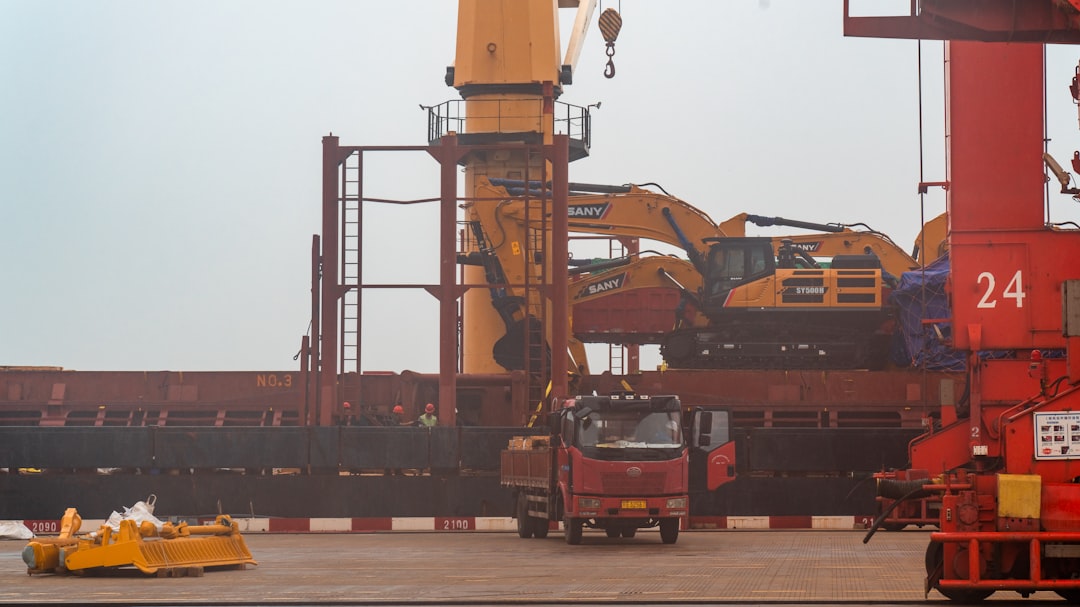The steel industry is a cornerstone of modern infrastructure, but its logistical complexities present significant challenges. Efficient steel delivery is crucial for profitability and customer satisfaction. This post explores how logistics optimization can forge a path to greater efficiency and cost savings within the steel delivery process.
1. Route Optimization: Mapping the Most Efficient Path
Route optimization is paramount in steel delivery. Steel is heavy and bulky, making transportation costs a significant factor. Traditional methods often rely on static routes, leading to wasted fuel, increased delivery times, and higher expenses. Advanced route planning software leverages real-time data, including traffic conditions, road closures, and delivery windows, to dynamically calculate the most efficient routes for each delivery. This involves considering factors like vehicle capacity, weight restrictions on certain roads, and the number of delivery points. By implementing sophisticated algorithms, businesses can significantly reduce mileage, minimize fuel consumption, and ultimately lower their carbon footprint. Furthermore, optimized routes lead to improved on-time delivery rates, enhancing customer satisfaction and building stronger relationships.
2. Inventory Management: Striking the Perfect Balance
Effective inventory management is crucial for preventing stockouts and minimizing storage costs. Steel is a high-value commodity, and excessive inventory ties up capital that could be used elsewhere. Conversely, insufficient inventory can lead to production delays and lost sales. Logistics optimization in this area involves implementing a robust inventory management system that accurately tracks stock levels, predicts demand, and optimizes order quantities. This might involve integrating data from various sources, including sales forecasts, production schedules, and supplier information. Techniques like Just-in-Time (JIT) inventory management can be particularly beneficial, ensuring that steel arrives only when needed, minimizing storage space and reducing the risk of obsolescence or damage.
3. Transportation Management: Choosing the Right Mode and Partner
Steel delivery often requires a multimodal approach, combining different transportation modes to achieve optimal efficiency. For example, long-distance transport might be most cost-effective via rail or sea freight, while shorter distances might be better served by trucks. Logistics optimization involves carefully evaluating the pros and cons of each mode, considering factors like cost, speed, capacity, and environmental impact. Choosing the right transportation partners is equally critical. Collaborating with reliable and experienced carriers who possess the necessary equipment and expertise is crucial for ensuring timely and damage-free delivery. Effective communication and real-time tracking capabilities are essential for maintaining transparency and addressing any unexpected issues promptly.
4. Warehouse Optimization: Streamlining Storage and Handling
Efficient warehouse management is another key aspect of logistics optimization in steel delivery. Steel requires specialized storage solutions to protect it from the elements and prevent damage. Optimizing warehouse layout, maximizing storage space, and implementing efficient handling procedures are all crucial. This might involve using racking systems, automated guided vehicles (AGVs), and warehouse management systems (WMS) to streamline the movement of goods. Proper inventory organization and labeling are also important to ensure quick and accurate order fulfillment. Minimizing handling reduces the risk of damage, improves efficiency, and contributes to overall cost savings.
5. Data Analytics and Predictive Modeling: Forecasting and Adapting
Data analytics plays a vital role in optimizing steel delivery logistics. By collecting and analyzing data from various sources, businesses can gain valuable insights into their operations. This data can be used to identify bottlenecks, predict demand fluctuations, and optimize resource allocation. Predictive modeling can help forecast future demand, enabling proactive adjustments to inventory levels and transportation plans. Real-time tracking and monitoring systems allow businesses to track shipments, identify potential delays, and respond quickly to unforeseen circumstances. This proactive approach minimizes disruptions, improves on-time delivery rates, and enhances overall efficiency.
By implementing these strategies, steel companies can significantly improve their logistics operations, leading to reduced costs, enhanced customer satisfaction, and a more sustainable supply chain. The integration of technology and data-driven decision-making is key to unlocking the full potential of logistics optimization in the steel industry.
SEO-Friendly Tags:
- Steel Delivery Optimization
- Steel Logistics Management
- Route Optimization for Steel
- Supply Chain Management Steel
- Efficient Steel Transportation




